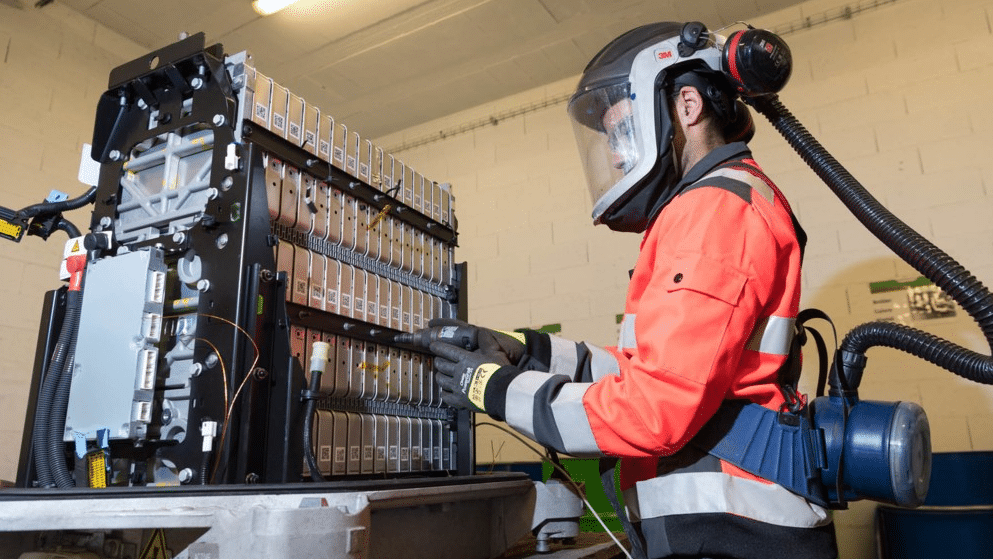Recovering the strategic metals contained in EV batteries at the end of the life of electric vehicles to limit the impact on resources and the environment: these are the challenges bringing together Groupe Renault, Veolia, and Solvay.
From 10 to over 100 million. The number of electric vehicles on Europe’s roads is expected to increase tenfold by 2030. This makes the supply and recycling of metals for electric batteries a crucial issue.
Groupe Renault is the first carmaker to act on the entire life cycle of the battery. It has developed solid expertise to increase its durability and extend its uses.
Optimize the life cycle of batteries
It all started in Flins, Renault’s oldest plant still in operation, where, in 2011, the industrial know-how to repair batteries was developed to extend their lifespan. Today, this expertise is spread across some twenty centers in 17 countries in Europe. With the Re-Factory project to convert the Flins plant into a site dedicated to the circular economy, the aim is to reach a capacity of 20,000 repairs by 2030.
Knowing how to repair batteries is essential and offering them a second life outside the vehicle is a new step forward. As with smartphones or computers, battery cells lose performance after 8 to 12 years. However, at the end of this first life, they can still provide new operating opportunities. Groupe Renault and partners are experimenting with second-life batteries, for example, to store electricity from renewable energies (wind, solar, etc.). These initiatives make it possible to restore energy reserves as needed and to postpone battery recycling by 5 to 10 years!
You Might Also Like: VW Opens Plant for Recycling Electric Car Batteries
At the end of a full life, comes the recycling stage. For more than 10 years, Groupe Renault has been recycling its batteries with the expertise of Veolia, the world leader in optimized resource management. Once the diagnosis has been made and the battery has been secured, the battery components and cells are deconstructed and crushed. The metals are extracted and reused in various industrial processes.
Making new from old
But what if it were possible tomorrow to reconstitute new batteries from end-of-life batteries? This is the ambition that Groupe Renault, Veolia and Solvay, a leader in advanced chemistry, have set themselves by joining forces. By combining cutting-edge technologies, the extraction and purification processes for metals such as lithium, nickel and cobalt will be optimized so that they can be reused in the manufacture of new batteries. This will close the loop and help reduce the environmental footprint of future electric vehicle batteries.
Establishing a more virtuous circular ecosystem
In keeping with the principle of the circular economy, the three partners are paving the way for a safer and more sustainable supply of strategic materials for batteries. The implementation of this closed circuit will help preserve natural resources and generate new sources of growth and competitiveness in Europe. This is a concrete commitment, as it involves the setting up of a pilot plant in France in the short term.


